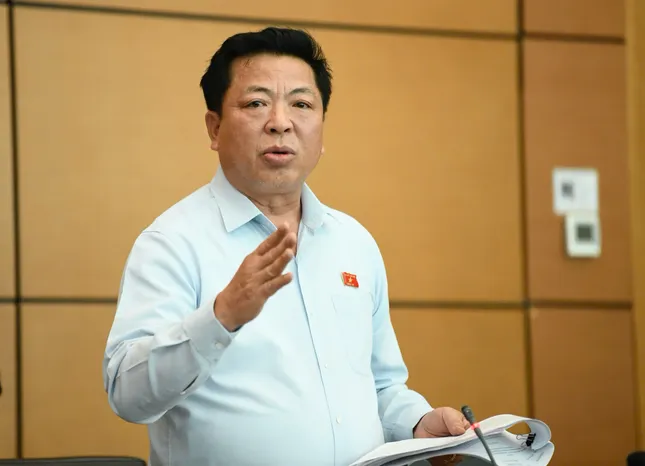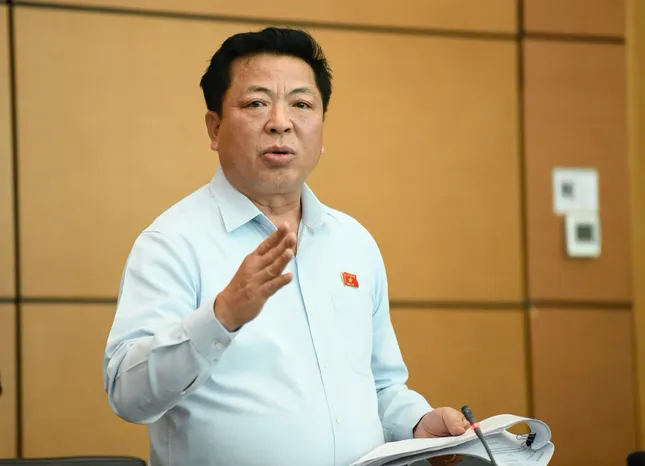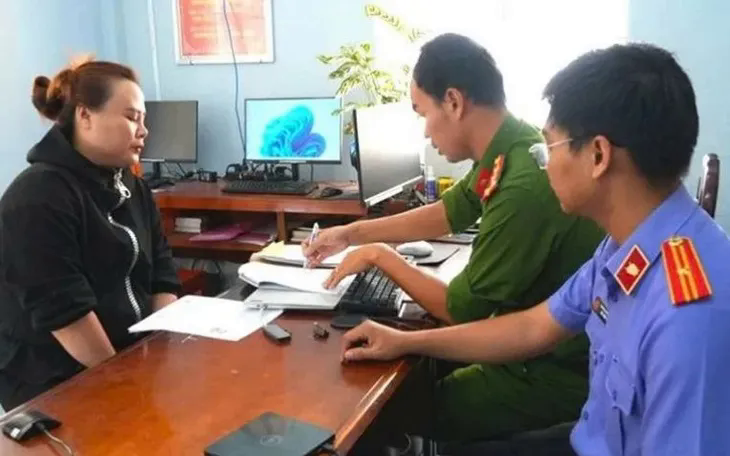After 50 years, still not technologically independent
On June 16, the National Assembly discussed the draft Amended Law on Railways in groups.
During the discussion, Mr. Tran Hong Minh, Minister of Construction, shared that Vietnam’s railway system has a long history, dating back over 140 years. It has greatly contributed to the country’s development, especially during the war years and the subsidy period.

Minister of Construction Tran Hong Minh at the discussion session. Photo: N.Y.
However, the implementation process has been largely dependent on foreign factors, from investment and capital mobilization to technology transfer. This has led to prolonged construction times, cost overruns, and a lack of technology ownership and supply capability. Each project uses technology from a different country, resulting in a lack of synchronization and difficulties in procurement, replacement, and repair, all dependent on foreign countries.
Minister Tran Hong Minh emphasized that this situation reveals the inadequacies of the current legal system. It has been a significant concern for the Ministry of Transport in the past and now for the Ministry of Construction. Despite 50 years of national liberation, we are still not technologically independent in this crucial sector. Therefore, the proposed comprehensive amendments to the Railway Law aim to address these legal bottlenecks.
Streamlining processes and reducing costs
Regarding the changes in the draft law compared to the current one, Mr. Minh mentioned that the old law had 84 articles but was overly detailed, with many contents falling under the government’s jurisdiction rather than the National Assembly’s. The amended draft law has removed 24 articles, leaving around 60 articles focusing on core issues.
Key additions to the draft amended law include state incentives for railway development, with clear criteria and conditions to attract investors. Minister Tran Hong Minh stressed that solely relying on state investment without encouraging private sector participation would hinder successful implementation. Therefore, the draft law has incorporated regulations on capital mobilization and private sector development.
Currently, five investors have registered for railway projects. Thus, creating conducive mechanisms and policies to facilitate their efficient investment is essential.
Another novel aspect of the draft law is the integration of railway development with the Transit-Oriented Development (TOD) model. This strategy allows investors to recoup their investments not only from ticket sales, which could take a century, but also by exploiting the land funds at stations and urban areas for reinvestment. This approach enhances the project’s economic viability and fosters the development of modern, civilized cities.
Additionally, the draft law streamlines investment procedures by combining certain stages, such as allowing the combination of the pre-feasibility study report with technical design and construction drawings. This measure can shorten the investment preparation time and reduce costs for the state, as emphasized by the Minister.
Notably, the draft law also permits the separation of land clearance projects, enabling land clearance to be completed before construction, thus ensuring uninterrupted project implementation.
Revolutionizing Legal Frameworks: Forging Ahead with National Railway Systems
The proposed amendments to the Railway Law signify a pivotal moment for Vietnam’s railway industry. This draft law represents a bold initiative to establish a transformative legal framework, paving the way for the industry’s dynamic evolution and setting a precedent for transportation sector reform in the country.
“Streamlined and Superior: How Special Mechanisms Slashed Over 1,000 Days Off Social Housing Procedures.”
“This information was presented by Mr. Le Hoang Chau, Chairman of the Ho Chi Minh City Real Estate Association (HOREA), at a seminar on “Breakthroughs for Social Housing Development” organized by the Government Portal on June 5th.”





















